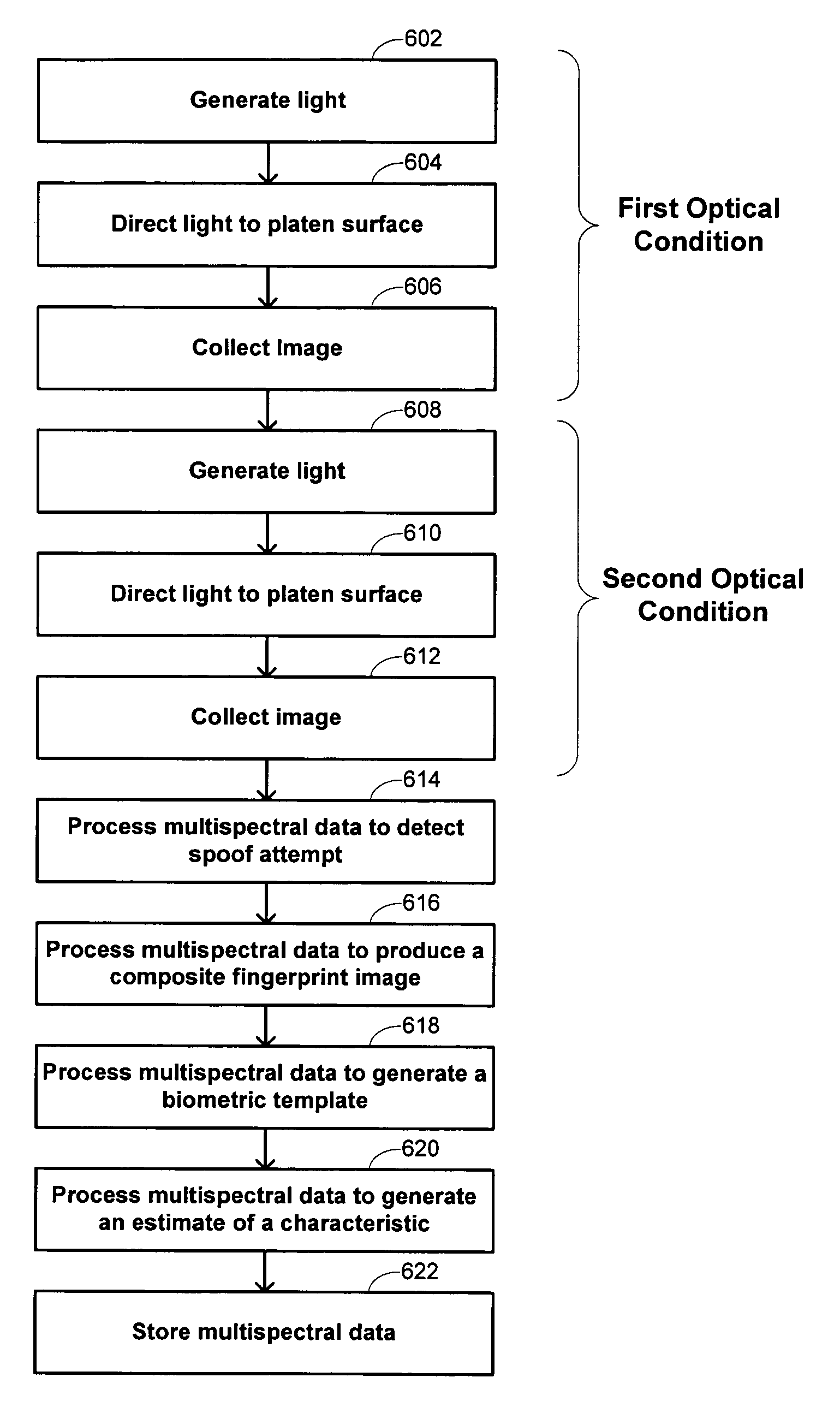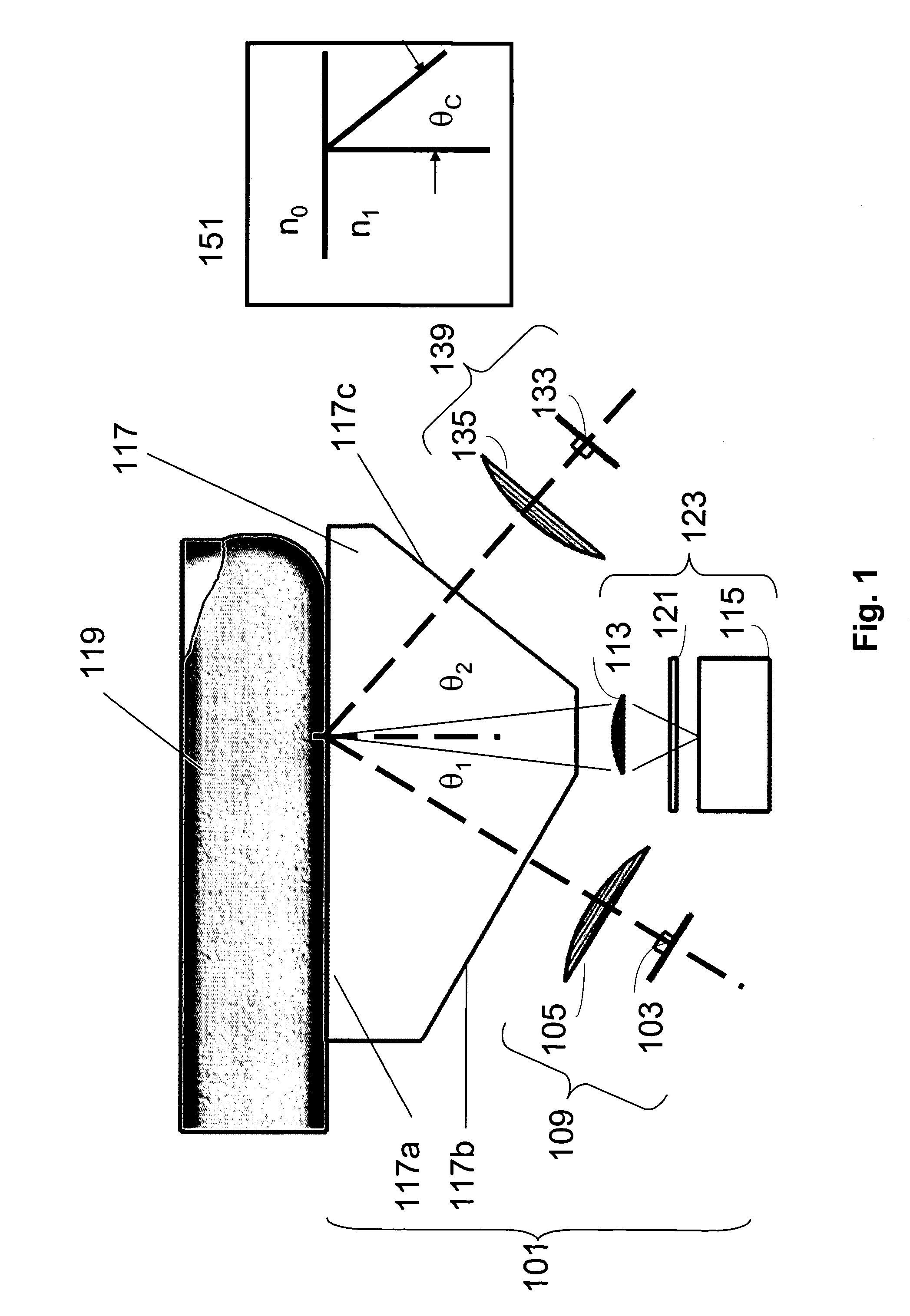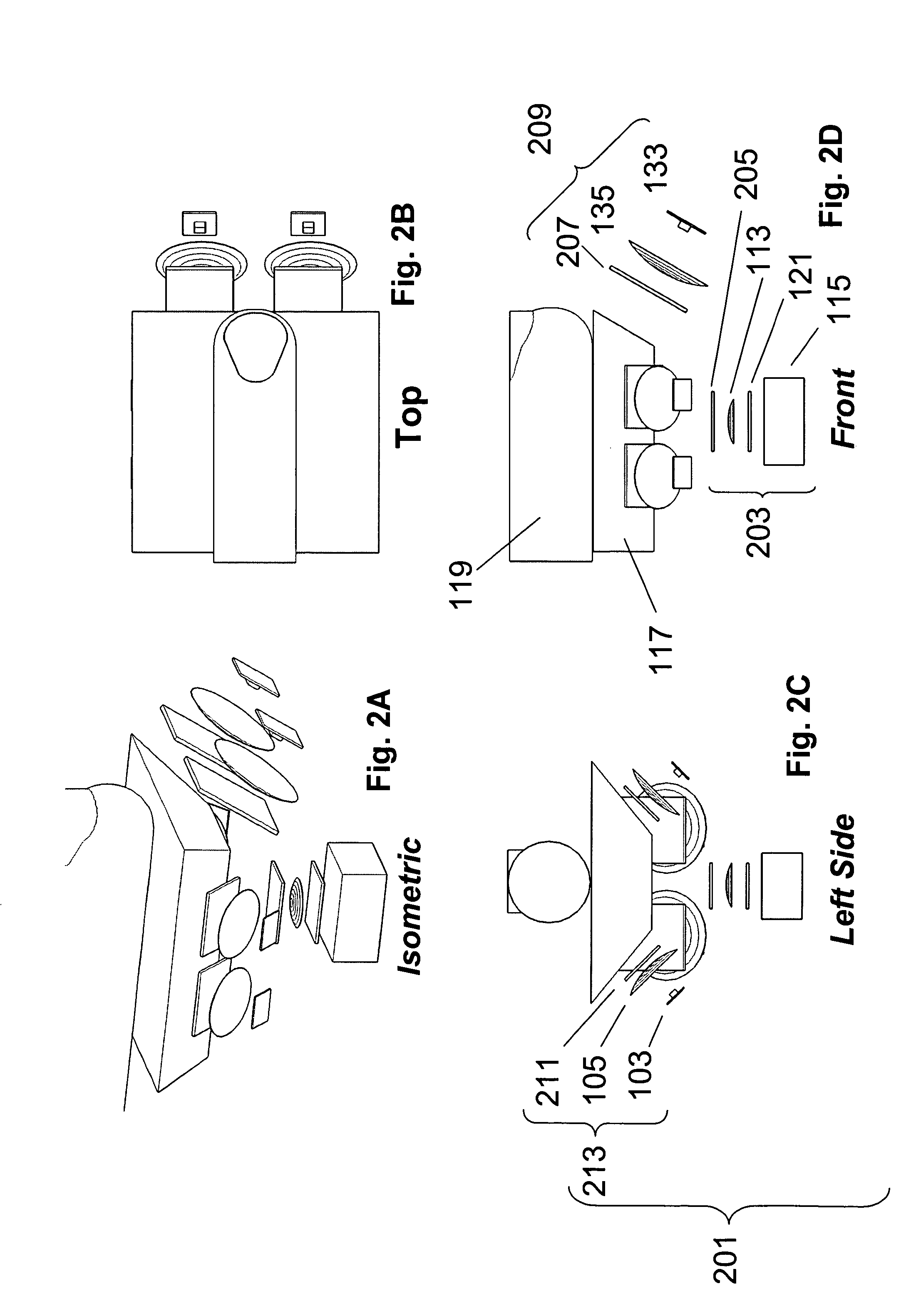Multispectral imaging biometrics
a biometric and multi-spectral imaging technology, applied in the field of biometrics, can solve the problems of poor image contrast, reduced image contrast, and easy to image quality problems
- Summary
- Abstract
- Description
- Claims
- Application Information
AI Technical Summary
Problems solved by technology
Method used
Image
Examples
example
[0136]A specific example of a structure that incorporates a sensor as described herein for an embodiment is described in connection with FIGS. 15A-15D. In this embodiment, the sensor is comprised by a turnstile having the general structure shown in FIG. 15A, the turnstile being of the type that may be used to control access by people to different areas in an amusement park, sports arena, or the like. The different areas between which the turnstile controls access are denoted as a “paid area” and a “free area” in FIG. 15A. Access is controlled with a dropping-arm tripod obstacle 1502. The biometric sensor 1504 may be mounted on the top surface of the turnstile housing.
[0137]A specific structure for the biometric sensor is shown in FIG. 15B, with imaging taking place over a platen 1530 having an ergonomic cover plate; the back of the ergonomic cover plate may act as an optical reference. Direct illumination is provided by illumination sources 1534, some of which include polarizers and...
PUM
 Login to View More
Login to View More Abstract
Description
Claims
Application Information
 Login to View More
Login to View More - R&D
- Intellectual Property
- Life Sciences
- Materials
- Tech Scout
- Unparalleled Data Quality
- Higher Quality Content
- 60% Fewer Hallucinations
Browse by: Latest US Patents, China's latest patents, Technical Efficacy Thesaurus, Application Domain, Technology Topic, Popular Technical Reports.
© 2025 PatSnap. All rights reserved.Legal|Privacy policy|Modern Slavery Act Transparency Statement|Sitemap|About US| Contact US: help@patsnap.com



